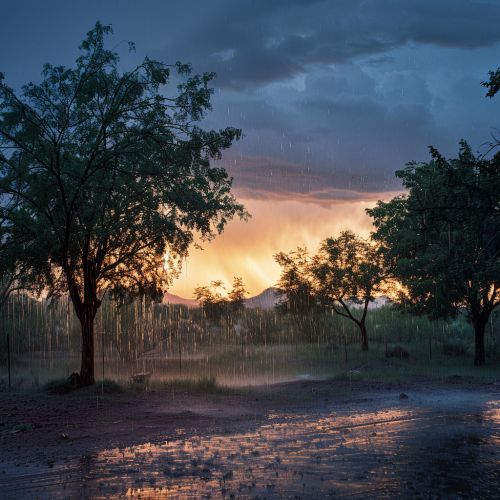Southwest monsoon
Introduction
The Southwest monsoon, also known as the Indian monsoon, is a significant weather phenomenon that affects the Indian subcontinent and surrounding regions. This meteorological event, which typically occurs between June and September, is characterized by heavy rainfall and is crucial for the region's agriculture and water supply.


Meteorological Background
The Southwest monsoon is a result of a complex interplay of global atmospheric circulation patterns, regional topography, and temperature differences between land and sea. The Hadley cell, a large-scale atmospheric convection cell in which air rises at the equator and sinks at medium latitudes, plays a crucial role in the formation of the monsoon. Additionally, the Intertropical Convergence Zone (ITCZ), a belt of low pressure near the equator, is instrumental in the monsoon's onset and withdrawal.
Mechanism of the Southwest Monsoon
The Southwest monsoon's mechanism involves a series of stages, starting with the heating of the Indian subcontinent during the pre-monsoon summer months. This heating results in the creation of a low-pressure area over the region, which attracts moisture-laden winds from the Indian Ocean. These winds, deflected by the Coriolis effect, blow from the southwest, giving the monsoon its name.
Impact on Agriculture
The Southwest monsoon has a profound impact on agriculture in the Indian subcontinent. The region's farming sector heavily relies on the monsoon rains for irrigation. Major crops like rice, sugarcane, and cotton are predominantly rain-fed, making the monsoon critical for food security and rural livelihoods.
Climate Change and the Monsoon
Climate change is having noticeable effects on the Southwest monsoon. Studies indicate that global warming could lead to changes in the monsoon's timing, intensity, and spatial distribution, with potential implications for water resources and agriculture.
